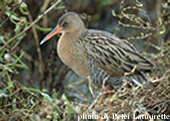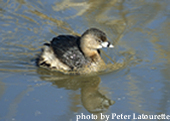The development of the National Marsh Bird Monitoring Program began in 1999 and was one of the outcomes from a 1998 marsh bird workshop at Patuxent Wildlife Research Center (Ribic et al. 1999). The program was designed to develop and beta-test standardized protocols to be used in a national or continental monitoring effort. Information about the status and population trends of many species of secretive marsh birds is limited. This general lack of knowledge is the product of two factors:
- Inconsistencies in survey methodology used across the continent make it very difficult to compare data from local and regional survey efforts.
- Current broad-scale monitoring efforts, such as the Breeding Bird Survey, lack adequate coverage of wetland habitat to provide statistically significant results on marsh bird trends.
The development of a well-structured, standardized monitoring program will hopefully alleviate both of these problems and allow continental, regional, and local trends in marsh bird abundance to be determined. Gaining better knowledge of trends in marsh bird abundance is important for a variety of reasons:
- Several marsh bird species are considered threatened or endangered at both the federal and state levels.
- Marsh birds may represent “indicator species” for assessing wetland ecosystem quality.
- Some marsh bird species have high recreational value to birders.
- Several rails are game species in many states and provinces yet we lack responsible population surveys on which to base harvest limits.
Information gained from a standardized monitoring effort will help managers preserve biodiversity, ecosystem quality, and recreational value across the continent.


